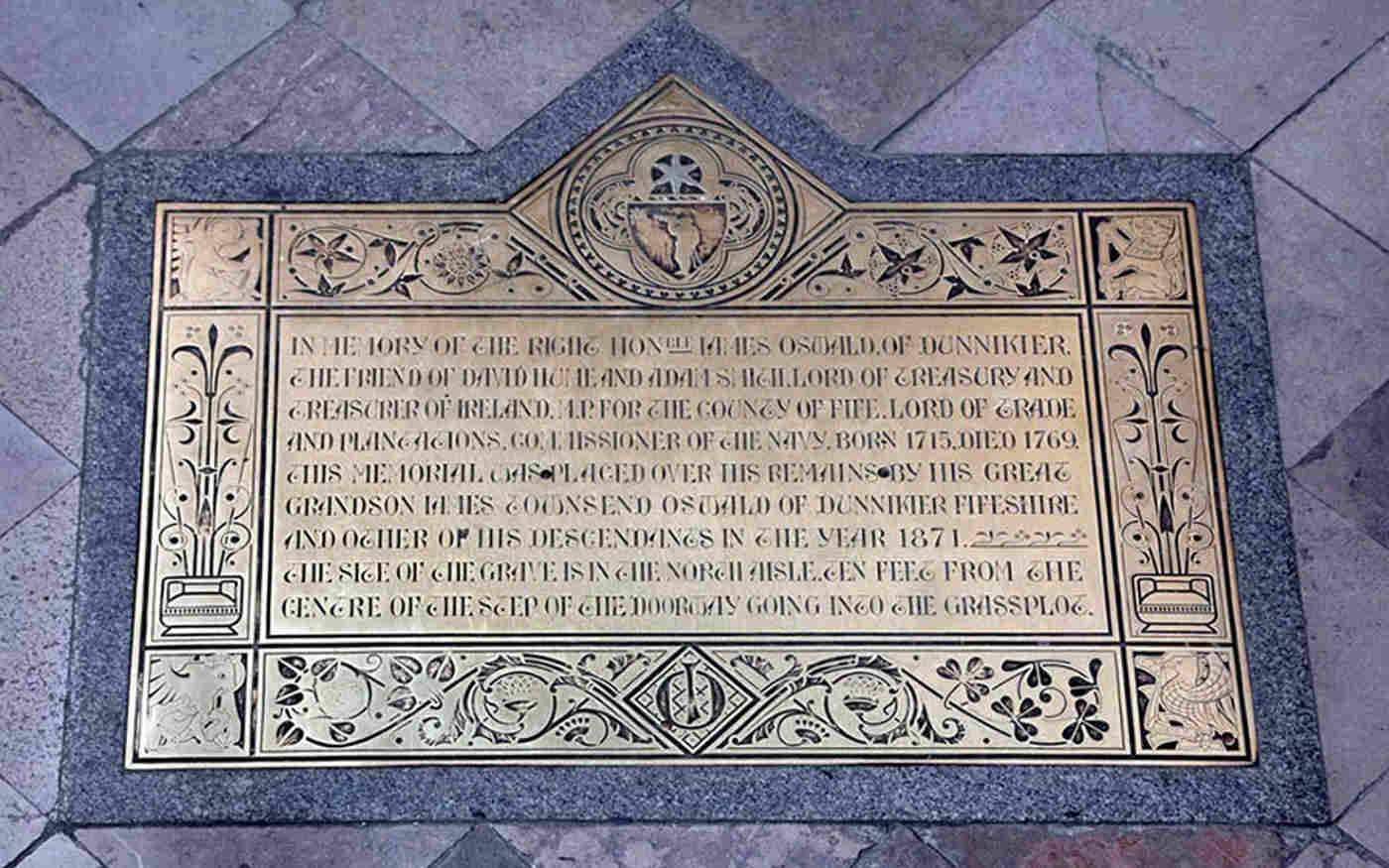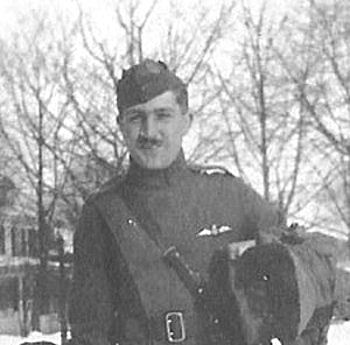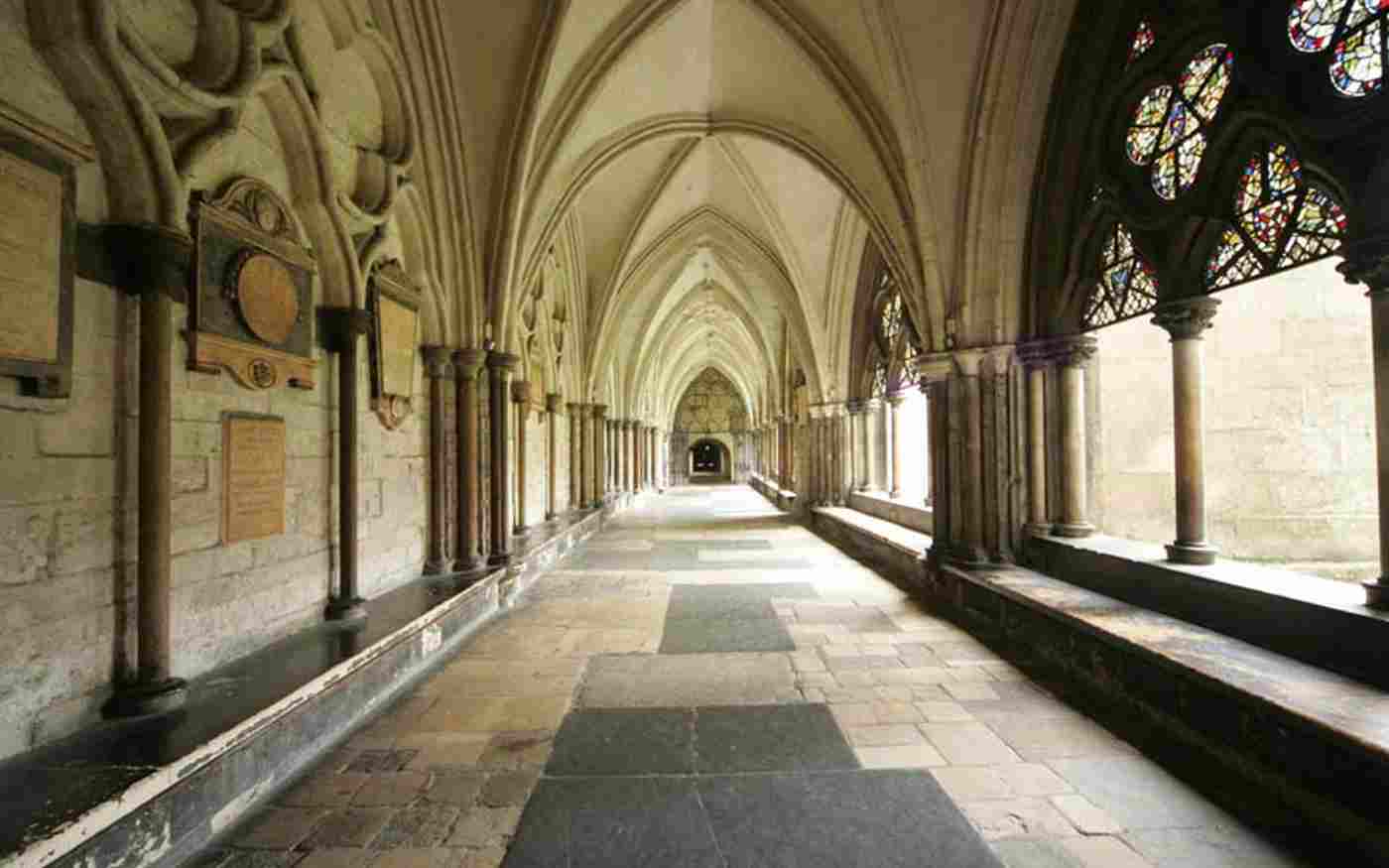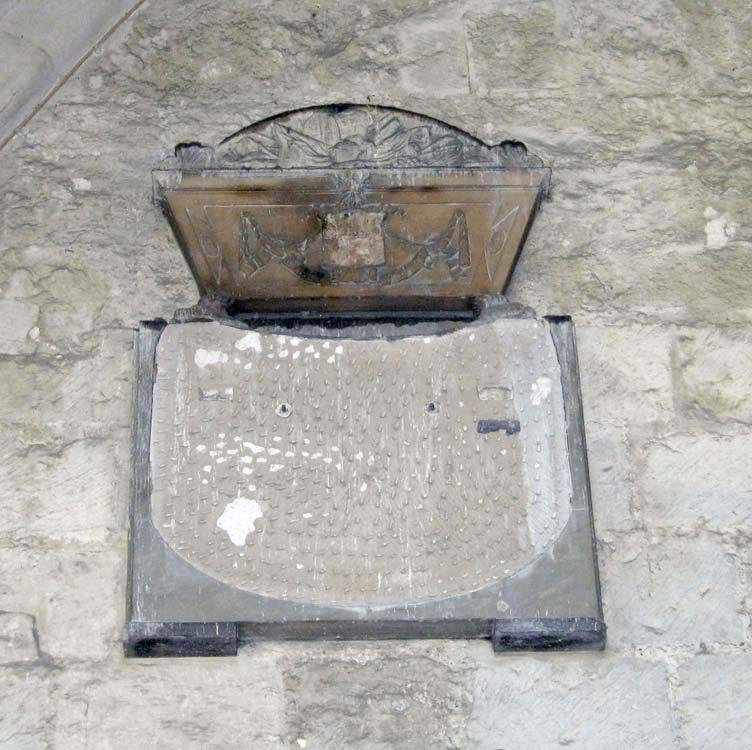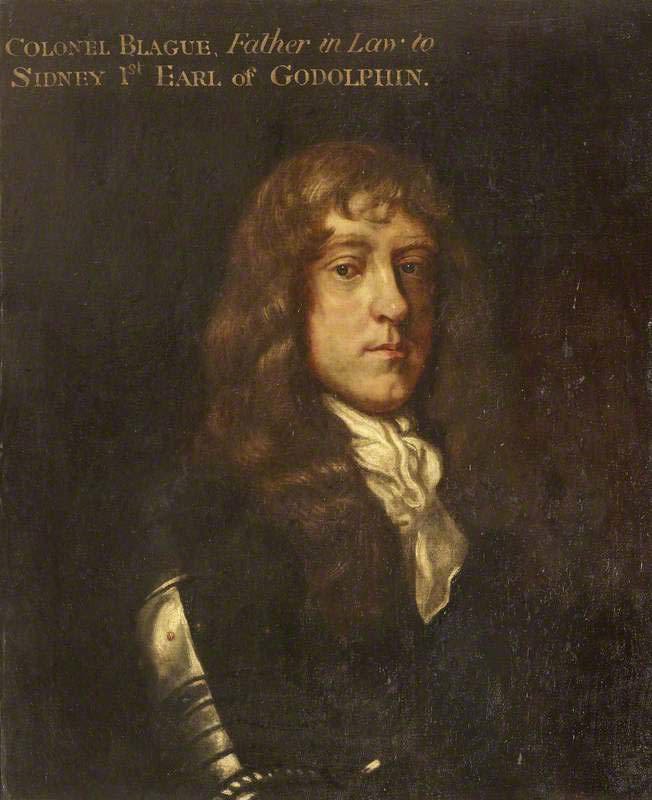James Stanhope & Stanhope family
In the nave of Westminster Abbey, within the choir screen, is a large monument to James Stanhope, 1st Earl Stanhope. The monument was erected in 1733 and is by William Kent and J.M. Rysbrack. It was designed to match that of Sir Isaac Newton, which is on the north side of the choir screen gates. It consists of a figure of Stanhope reclining on a sarcophagus wearing Roman armour and holding a baton. Above him is Minerva seated on a military tent. A putto leans on an achievement of the Earl's coat of arms. At the base are four medallions with inscriptions representing the cavalry battle at Almenara, Queen Anne, the capture of Minorca and Sardinia, and Victory laying flags at the Queen's feet after the battle of Saragossa.
The Latin inscription on the sarcophagus can be translated:
Sacred to the memory of the most noble JAMES, EARL STANHOPE, whom the magnificent diversity of his honours (by virtue of the multifarious excellence of his genius), step by step rendered illustrious. Reared from his earliest youth in a martial environment, he made his way, through an unbroken succession of commands, incurring no envy, to the very summit of military glory. Spain bears witness to his achievements as Commander in Chief, and affixed medallions utter a well earned eulogy. He gained no less fame in the management of civil affairs, sincere there was scarcely a single one of the more illustrious offices in which the fortune of his country did not exercise him, in which he did not distinguish himself as a loyal and wise benefactor of his country. As Secretary of State he was the author and perfector of most important alliances, and, as an upright Chancellor of the Exchequer, he maintained a scrupulously honest guard over the public monies, together with a shrewd management of the interest thereof. In each House of Parliament outstanding in his gift for spirited oratory, he stimulated and fired the minds of his audience, while himself maintaining a tranquil and steadfast judgement amidst the burning ardour of his eloquence. While he was tempering these arts of war and peace with the kindliness of his most amiable character, and most graciously adorning with the pleasures of a more cultivated learning his times of respite from his affairs, an untimely death forbade that he should continue to be a blessing to his country (unless through the excellent hopes afforded by his surviving progeny). He died on 5 February 1720 in the 47th year of his age
The date of his death is given in Old Style dating and would now be 1721. Below the medallions it says:
This monument was here erected, as a final token of conjugal affection, and as a lasting effigy of a man who had been honoured with the ceremony of a public funeral, at the command of his grieving wife, the Lady Lucy. She was bound to her eminent husband by the closest ties of love and virtue.
His life
James was born in Paris, a son of the Hon. Alexander Stanhope and his wife Katherine (Burghill). He was educated at Eton and Oxford and had a distinguished military career during the war of the Spanish Succession. In 1708 he was commander of the British forces in Catalonia and took Minorca from the Spaniards. He was later captured by the Duc de Vendome. On his release he took up politics, as stated in the inscription. In 1713 he married Lucy (died 1723), daughter of Thomas Pitt, and had seven children. He was created Viscount Stanhope of Mahon. In 1718 he became Earl Stanhope. He died of a stroke and after his full military funeral in London he was buried at his family seat at Chevening in Kent. His son Philip succeeded as 2nd Earl and married Grisel Hamilton.
Stanhope family
Inscriptions to later Stanhope's have been added to the monument (all of them are buried at Chevening). On the left pedestal the English translation reads:
Here also is commemorated GEORGE STANHOPE, second son of James, Earl Stanhope, who, having resigned the rank of aide de camp in 1747-8 (having held this office for about five years) died, a private citizen, on 24th March 1754 in his 37th year. Peradventure a loss to his country, his was certainly a bitter loss to his friends. In 1743 he strove on his Sovereign's behalf at Dettingen: in 1745 he averted disaster at Falkirk: in 1746 he shared in the victory at Culloden: in 1747 he was nobly wounded at Lafeldt. His sorrowing brother P.C.S. ordered this memorial to be made.
On the right pedestal:
Sacred to the memory of Philip, Earl Stanhope, who, being fully cognisant of virtue, vigorously and loyally defended the ancient liberties of his country, seeking neither praise or reward. He passed this life in tranquil scholarship, with the utmost enthusiasm pursuing and nurturing the liberal arts, and in particular mathematics, always uniting in himself a dutiful respect with brilliance and uprightness. He died 7th March 1786 aged 72.
On the left base:
Sacred to the memory of Philip Henry, fifth Earl Stanhope, scholar, historian, parliamentarian, who deserved well of Church and State. He died 24th December 1875 aged 70
On the right base:
Philip, 4th Earl Stanhope 1781-1855
Arthur 6th Earl Stanhope 1838-1905
On the left side of the left base:
James 7th Earl Stanhope and 13th Earl of Chesterfield K.G., P.C., D.S.O., M.C., statesman 1880-1967. He bequeathed Chevening House its contents and the estate to the Nation
The earldom of Stanhope became extinct after the 7th Earl's death.
A history of the Abbey published in 1823 records a slightly different inscription for Philip, 2nd Earl, with lines inscribed by his son Charles, 3rd Earl Stanhope (1753-1816) of which no trace remains (the 3rd Earl now has no mention on the monument). Charles was educated at Eton and the university of Geneva and was a politician, inventor and scientist. By his first wife Lady Hester Pitt (daughter of William Pitt, Earl of Chatham) his children were Hester, Griselda and Lucy. By his second wife Louisa Grenville his children were Philip (who became the 4th Earl), Charles Banks Stanhope and James Hamilton Stanhope.
Charles Banks Stanhope
A separate monument for the brother of Philip, 4th Earl Stanhope is in the north west tower chapel in the nave of Westminster Abbey. This takes the form of a marble monument in the shape of a shield, with a background of a sword, carbine and two military flags. The fee for the monument was paid in 1814 by Westmacott. The inscription reads:
To the memory of the Honble. Charles Banks Stanhope, second son of Charles, Earl Stanhope, and nephew of the Right Honble. William Pitt; Major of the 50th regiment of Foot, who, in the act of gallantly encouraging his men, fell by a musquet shot in the battle of Corunna. This tablet is affectionately inscribed by his afflicted sister, who can neither do justice to his virtues nor sufficiently deplore his loss. Born 3 June 1785. Died 16 Jan. 1809.
Further reading for Stanhopes
Oxford Dictionary of National Biography 2004
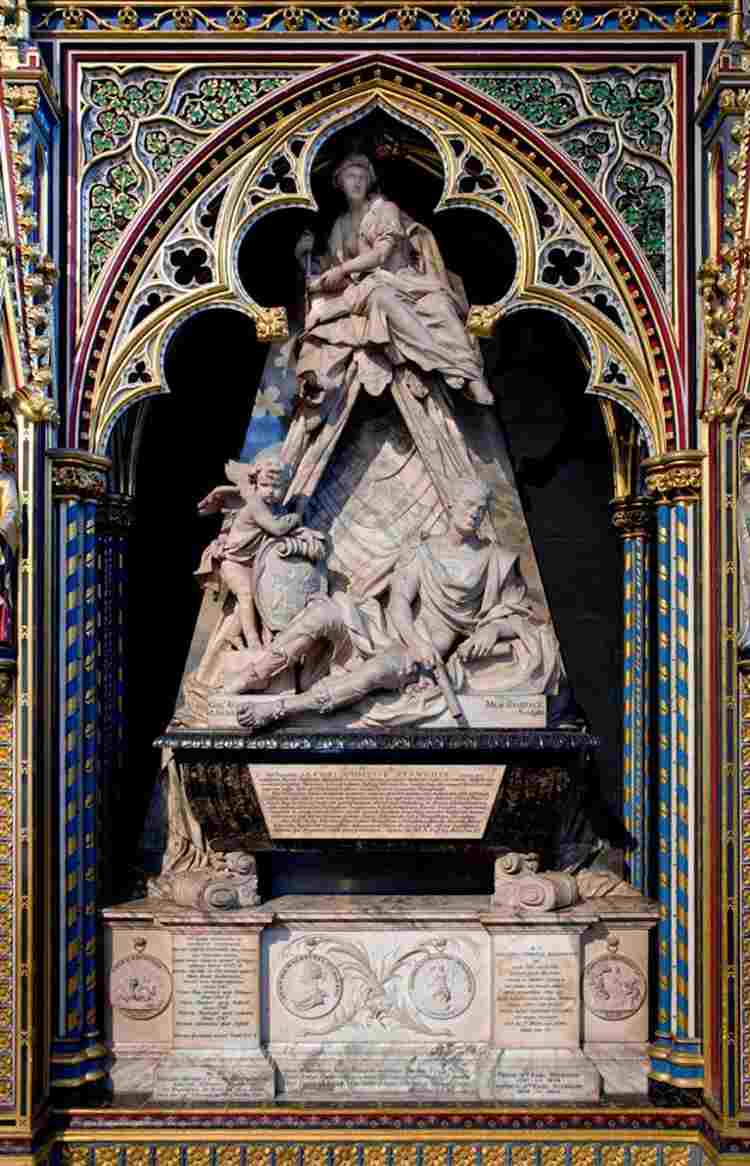
This image can be purchased from Westminster Abbey Library
Image © 2025 Dean and Chapter of Westminster

This image can be purchased from Westminster Abbey Library
Image © 2025 Dean and Chapter of Westminster
